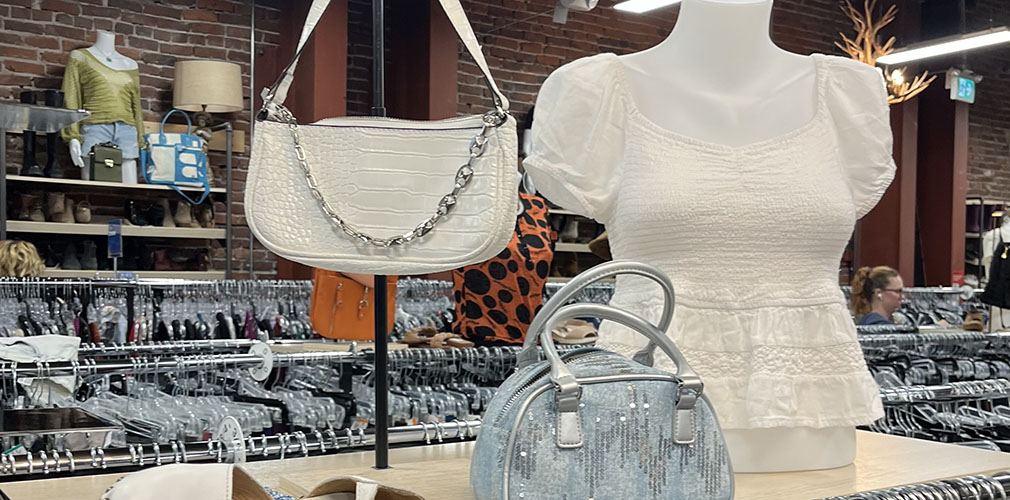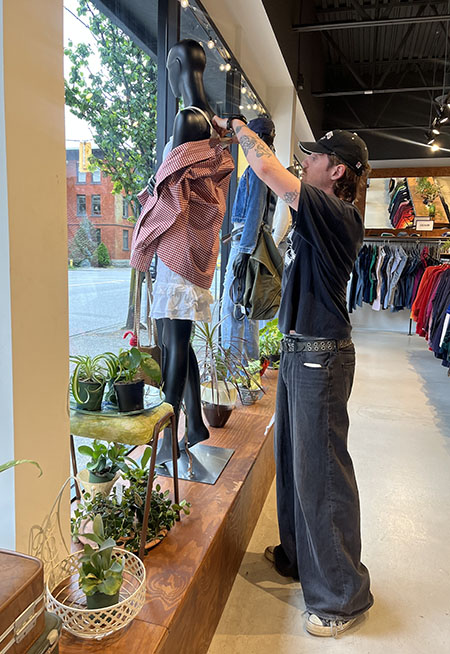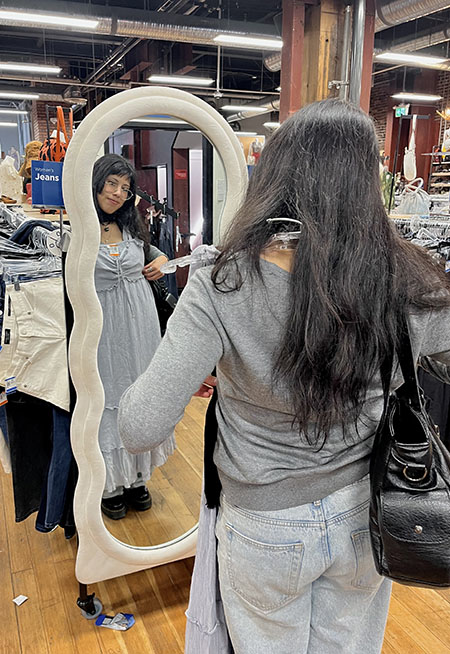

Students are the future generation of thinkers and writers. As such, we welcome student submissions for AC Chronicles and we are proud to present this inaugural student-submitted blog post by Tania Flores.
Have you ever walked down the street and realized “Hey! That guy is wearing the exact same shirt that I own!” If so, you have got to try thrifting. In Vancouver, as in many cities around the world, people will donate the clothes they no longer need so that somebody else can buy them at thrift stores and give them a second life.
Thrift culture is growing in our city and makes it possible for us to find one-of-a-kind items that are affordable and most importantly, socially responsible.

Let me paint a picture: it is the end of the summer, and the chilly days are slowly coming back, it is time for you to get a a new jacket! Your bank account has few funds to spare, lucky for you, Urban Behaviour has the best prices in Metrotown.
A year passes by, and you realize that the $19 jacket that you loved so much has now a hole in the back. It is time to get clothes again. And the cycle repeats. I have been in that situation many times, meanwhile, my mom still wears her clothes from the 90s!
Clothes are not meant to last long nowadays, but at thrift stores, you can find pieces from a time when brands cared more about quality. Just last week I thrifted a lilac dress which weights the equivalent of five of the flimsiest dresses in my closet, it had two layers of dense fabric that draped beautifully and flowed with my every movement. The price: $16.99.
Have you ordered affordable clothes online? Or have you spent less than $20 for a piece of clothing at the mall? Chances are you have bought from a fast fashion brand before. Fast fashion brands compete to produce the latest trends, the quickest and the cheapest. How? They rely on the labour of low-wage countries such as China, India, and Bangladesh.
The lack of labour protection laws in these countries result in workers forced to work long shifts in unsafe and stressful conditions in exchange for as low as 20 cents per hour. Fast fashion companies thrive by selling high volumes of clothing at low prices, they are producing twice the amount of clothes today than in 2000. It is in their interest to encourage hyper-consumerism. TikTok hauls, promo codes, free shipping… these strategies are paying the salaries of their CEOs.
To make matters worse, our society has normalized micro-trends, in other words, viral items that will end up in the back of your closet or in the trash within a year. We are also willing to buy an overpriced t-shirt that we do not need because it has the next logo everybody is wearing.

“You don’t need to buy new things to have good style.”
The result is overconsumption. Where do all these products end up? Many people donate them and feel good about themselves. “We do get a lot of donations, our (back) rooms get pretty full,” says Sasha, an employee at Wildlife Thrift Store in downtown Vancouver. As it turns out only half of the donations make it to the shelves and only half of those clothes are sold.
What happens to the rest? Of the 100 billion garments produced each year, 92 million tonnes end up in landfills often situated in developing countries for them to deal with the problem. Some vintage stores like The Only on Davie intercept clothes at rag yards and make them available for us to rediscover.
If you are ready to thrift, here is what you need to know. The crowded racks can be overwhelming, so here’s my strategy: instead of trying to go piece by piece, sort clothes with your eyes. If you spot a nice pattern or colour, touch the fabric to ensure it is decent quality. If it feels good to the touch, then go ahead and get a better look of that piece, maybe even pull out the hanger.
Not all thrift stores have changing rooms; wearing light shorts and a tank top makes it easy to try clothes over them. This is normal practice at thrift stores such as Value Village.
Often I find close to perfect garments with a little hole in them, or perhaps a stubborn stain. Nine out of ten times I’ve been able to mend them with a simple hand stitch or wash the stain away with some Oxiclean.
The jolliest part for me about thrifting is finding a piece and envisioning something completely different made out of it. Despite not having a sewing machine, about half of my thrifted clothes have been modified in some way or another; if I owned one, I’d be unstoppable. All this to say that mending and sowing are a wonderful tool for bringing clothes back to life. The result will be uniquely yours, a piece no one could replicate. Give it a try, it could become your new creative outlet.

Hamish, manager at The Only on Davie, recommends going in with an open mind, “Take your time… grab whatever looks good to you… sizing has changed so much through time, you might as well try it on.”
“Everyday is a different adventure… you just never know what you’re going to stumble upon.”
Thrifting is an opportunity to reconnect with what you like without judgement nor the pressure of fleeting trends. Do not feel ashamed of wearing second hand clothing, you are not alone. Thrift shopping has been around for decades, and according to Hamish and Sasha, Vancouver’s thrift culture is growing once again. “People here are pretty conscious about reusing stuff… (they) see the value in getting more use out of an item,” explains Sasha.
We do not have the means to recycle all the textile waste we are producing! I challenge you to examine your shopping tendencies and give thrifting a chance. Let us have some fun and bring back to life the clothes that somebody else has already put in this planet, there is an abundance of them!
Alexander College acknowledges that the land on which we usually gather is the traditional, ancestral and unceded territory of the Coast Salish peoples, including the territories of the xʷməθkwəy̓əm (Musqueam), Skwxwú7mesh (Squamish), and Səl̓ílwətaʔ/Selilwitulh (Tsleil-Waututh) Nations. We are grateful to have the opportunity to work in this territory.
Alexander College acknowledges that the land on which we usually gather is the traditional, ancestral and unceded territory of the Coast Salish peoples, including the territories of the xʷməθkwəy̓əm (Musqueam), Skwxwú7mesh (Squamish), and Səl̓ílwətaʔ/Selilwitulh (Tsleil-Waututh) Nations. We are grateful to have the opportunity to work in this territory.